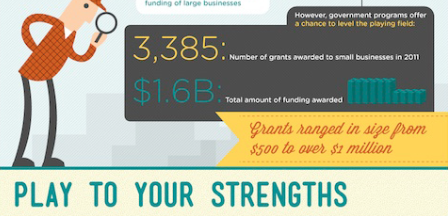In all of the breathless copy concerning new sources of data and analytics in marketing today, it can be easy to feel like your small business is lost in the shuffle. Sure, these analytics tactics work great for large businesses with seemingly bottomless resources and huge troves of data to analyze and reanalyze, but what does this mean for those of us at the other end of the spectrum? How can a small business find new customer data sources that are practical and actionable?
The good news is that the drive to digitization means you have a lot more data at your fingertips than you think. With help from software as a service (SaaS) platforms, you can transform your data into useful information and make important decisions about your marketing and your business.
The Winding Path to Purchase
Thanks to the internet and the move to mobile, the consumer path to purchase is more meandering than ever before. A search for plane tickets to price out a trip to LA can turn into a search for what to wear in Venice Beach, and all of the sudden, the customer is comparing user reviews of sunglasses or swimsuits. Getting a handle on where your marketing enters this sort of buying journey is tricky business if you don’t have the right data to back you up.
Looking to the future, Generation Z has several seemingly contradictory habits when it comes to making a purchase. According to a Criteo report, 80 percent of Gen Z-ers look forward to shopping in stores when they have the time, but 75 percent prefer to do as much of their shopping online as possible. Sixty-five percent of customers in this age group don’t like to buy new things unless they can touch them, but 67 percent use their phones in-store to research any purchases they are considering.
It’s clear that the best approach will combine smart digital marketing with a great in-store experience. You want to make sure that you’re accounting for the fact that customers will do their own research, but also be able to step in and offer your own insights and expertise.
At the same time, a lot of adjustments are just common sense. Don’t stock products that are poorly reviewed. Prioritize your in-store experience and focus on providing a personalized customer experience. Make sure that your customers can touch the thing they’re thinking of buying. Focus on the fact that you’re local, and let your marketing strategy reflect that.
The Data You Already Have
Getting smarter about digital marketing means taking advantage of the data you already have about your customers. One of the main sources of that data is purchases they’ve made.
In a way, we’re working backward through the buying journey to reverse-engineer the consumer path to purchase. Or, to put it more simply, since you already know that these people bought something from you, you just need to figure out how they made that decision to know how to market to more people like them.
When someone makes a purchase, you know:
● On what date they made their purchase.
● At what time of day they made their purchase.
● What items they bought.
● How much they spent.
● If they used discounts.
● What discounts they used.
● Where they live.
Breaking down a purchase into these smaller data points makes it easier to compare your customers and find patterns. These patterns, in turn, can help you figure out who to market to and how to reach them.
If you want to do this yourself, here’s a walkthrough to segment your purchasing data based on recency, frequency, and monetary value. There are also many great SaaS options to do this and much more for you, which we’ll get into soon.
Take Advantage of Referral Codes and Promo Codes
One of the most important questions you should ask after someone makes a purchase is how they found you in the first place. The key to getting that data is making good use of referral codes. You can do this by offering a discount or deal to customers who make referrals, which gives you insights into how your marketing message spreads.
You can also use different promo codes for each of the different campaigns you’re running to track performance. This lets you quickly see what messages are working with their intended audience, and which messages are missing the mark.
The Advantage of SaaS
SaaS platforms are a great way to help your small business get access to the same type of analytics insights that bigger companies use to drive their own marketing efforts. There are tools for metrics like churn, cost per acquisition, average revenue per customer, and more.
Other platforms focus on turning the data that you’re gathering in your CRM software into actionable insights you can use to guide your marketing decisions. These platforms combine your own proprietary information with publicly available resources to help give you a more detailed view of what you should be doing and when.
What You Can Do Right Now
In the push and pull between owning your identity as a local small business and effectively competing in the digital landscape, it can be hard to know where and how to invest your (limited) resources. Luckily, you can combine new ways of looking at the data you already have with the power of SaaS to get new insights into the consumer path to purchase and make smart decisions. Here’s what you can do right now:
● Work backward from purchases your customers have already made to untangle the winding buying journey.
● Break purchases down into small pieces of individual data.
● Use referral and promo codes to keep track of your marketing campaigns’ performances.
● Take advantage of SaaS platforms to gain new insights into your customers.
- 5 Reasons Why Cloud Solutions are Essential for Small Business - February 4, 2024
- How to Migrate Your Business to the Cloud in 7 Steps - June 16, 2021
- How Beacon Technology is Revolutionizing Business and Marketing - March 18, 2021



